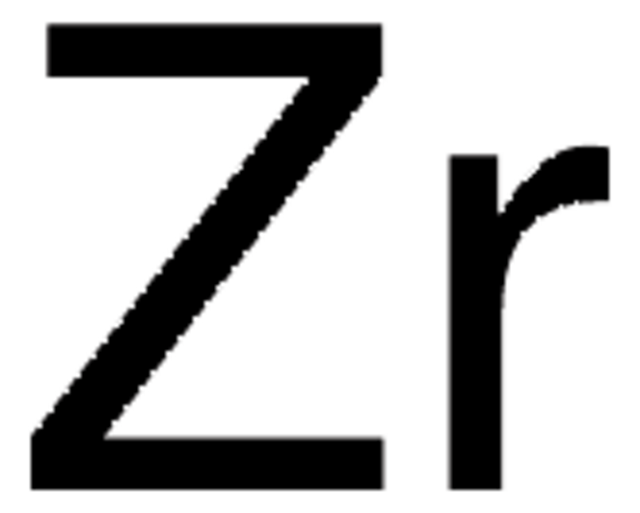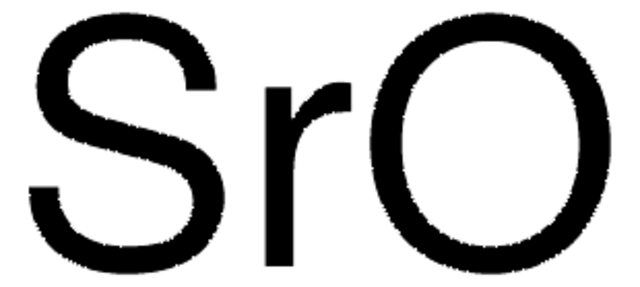460346
Estrôncio
dendritic pieces, purified by distillation, 99.9% trace metals basis
Sinônimo(s):
Strontium element
About This Item
Produtos recomendados
Nível de qualidade
Ensaio
99.9% trace metals basis
Formulário
dendritic pieces
purificado por
distillation
adequação da reação
reagent type: reductant
resistividade
23 μΩ-cm, 20°C
p.e.
1384 °C (lit.)
pf
757 °C (lit.)
densidade
2.6 g/mL at 25 °C (lit.)
cadeia de caracteres SMILES
[Sr]
InChI
1S/Sr
chave InChI
CIOAGBVUUVVLOB-UHFFFAOYSA-N
Procurando produtos similares? Visita Guia de comparação de produtos
Descrição geral
Aplicação
Palavra indicadora
Danger
Frases de perigo
Declarações de precaução
Classificações de perigo
Skin Irrit. 2 - Water-react 1
Perigos de suplementos
Código de classe de armazenamento
4.3 - Hazardous materials which set free flammable gases upon contact with water
Classe de risco de água (WGK)
WGK 3
Ponto de fulgor (°F)
Not applicable
Ponto de fulgor (°C)
Not applicable
Equipamento de proteção individual
Eyeshields, Gloves, type P3 (EN 143) respirator cartridges
Escolha uma das versões mais recentes:
Já possui este produto?
Encontre a documentação dos produtos que você adquiriu recentemente na biblioteca de documentos.
Global Trade Item Number
| SKU | GTIN |
|---|---|
| 460346-25G | 4061838147257 |
| 460346-5G | 4061838147264 |
| 460346-6X25G | |
| 460346-6X5G |
Nossa equipe de cientistas tem experiência em todas as áreas de pesquisa, incluindo Life Sciences, ciência de materiais, síntese química, cromatografia, química analítica e muitas outras.
Entre em contato com a assistência técnica





